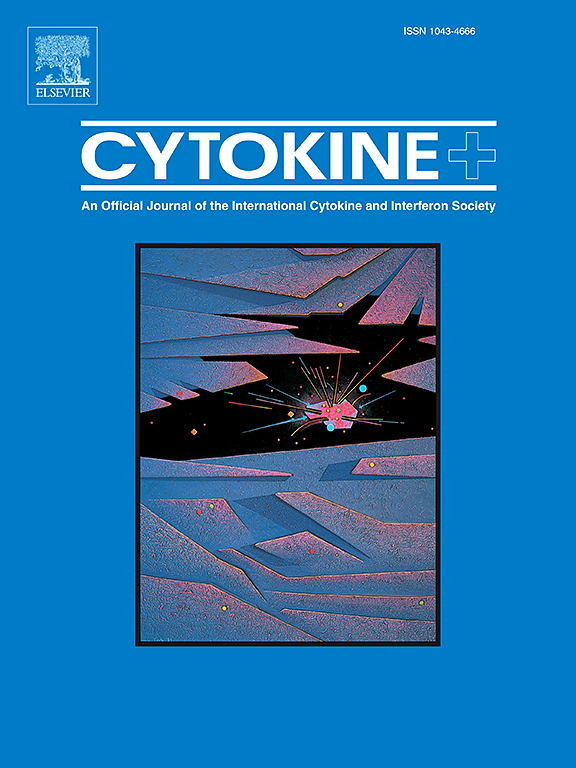ChREBP驱动成纤维细胞增殖,促进肺纤维化的发展。
IF 3.7
3区 医学
Q2 BIOCHEMISTRY & MOLECULAR BIOLOGY
引用次数: 0
摘要
研究目的本研究旨在通过评估碳水化合物反应元件结合蛋白(ChREBP)对肺组织中纤维化蛋白表达、成纤维细胞增殖和凋亡的影响,探讨其在肺纤维化(PF)发病机制中的作用:方法:使用博莱霉素建立肺纤维化模型,并通过组织病理学分析评估肺组织的病理变化。采用 Western 印迹和酶联免疫吸附法测定炎症标志物和纤维化蛋白(包括 ChREBP)的表达水平。此外,在TGF-β1诱导后,用ChREBP过表达或沉默载体转染人胚胎肺成纤维细胞(MRC-5),以检测细胞行为的变化,包括活力、凋亡和纤维化蛋白表达:结果:PF模型组肺泡结构明显异常,TNF-α、MMP-7和TGF-β1水平升高。ChREBP 在纤维化组织中的表达明显增加(P 结论:ChREBP 在纤维化组织中的表达明显增加:ChREBP 在 PF 中大量上调,并在促进成纤维细胞增殖和抑制细胞凋亡方面发挥关键作用。这些研究结果表明,靶向 ChREBP 可通过调节纤维化和细胞凋亡途径,为治疗肺纤维化提供一种新的治疗策略。本文章由计算机程序翻译,如有差异,请以英文原文为准。
ChREBP drives fibroblast proliferation and promotes pulmonary fibrosis development
Objective
The study aimed to investigate the role of carbohydrate-responsive element-binding protein (ChREBP) in the pathogenesis of pulmonary fibrosis (PF) by assessing its impact on fibrotic protein expression, fibroblast proliferation, and apoptosis in lung tissues.
Method
The PF model was established using bleomycin, and pathological changes in lung tissues were assessed through histopathological analysis. Expression levels of inflammatory markers and fibrotic proteins, including ChREBP, were measured using Western blot and ELISA. Additionally, human embryonic lung fibroblasts (MRC-5) were transfected with ChREBP overexpression or silencing vectors following TGF-β1 induction to examine changes in cellular behavior, including viability, apoptosis, and fibrotic protein expression.
Results
The PF model group showed significant alveolar structural abnormalities and elevated levels of TNF-α, MMP-7 and TGF-β1. ChREBP expression was markedly increased in fibrotic tissues (P < 0.05). In vitro, ChREBP overexpression in MRC-5 cells enhanced fibrotic protein levels, increased cell viability, and reduced apoptosis rates. Conversely, silencing ChREBP reduced fibrotic protein expression, inhibited fibroblast proliferation, and increased apoptosis (P < 0.05). These findings suggest that ChREBP plays a key role in modulating fibrosis-related pathways in PF.
Conclusions
ChREBP is substantially upregulated in PF and plays a key role in promoting fibroblast proliferation and inhibiting apoptosis. These findings suggest that targeting ChREBP may present a novel therapeutic strategy for treating pulmonary fibrosis by modulating fibrotic and apoptotic pathways.
求助全文
通过发布文献求助,成功后即可免费获取论文全文。
去求助
来源期刊

Cytokine
医学-免疫学
CiteScore
7.60
自引率
2.60%
发文量
262
审稿时长
48 days
期刊介绍:
The journal Cytokine has an open access mirror journal Cytokine: X, sharing the same aims and scope, editorial team, submission system and rigorous peer review.
* Devoted exclusively to the study of the molecular biology, genetics, biochemistry, immunology, genome-wide association studies, pathobiology, diagnostic and clinical applications of all known interleukins, hematopoietic factors, growth factors, cytotoxins, interferons, new cytokines, and chemokines, Cytokine provides comprehensive coverage of cytokines and their mechanisms of actions, 12 times a year by publishing original high quality refereed scientific papers from prominent investigators in both the academic and industrial sectors.
We will publish 3 major types of manuscripts:
1) Original manuscripts describing research results.
2) Basic and clinical reviews describing cytokine actions and regulation.
3) Short commentaries/perspectives on recently published aspects of cytokines, pathogenesis and clinical results.
 求助内容:
求助内容: 应助结果提醒方式:
应助结果提醒方式:


